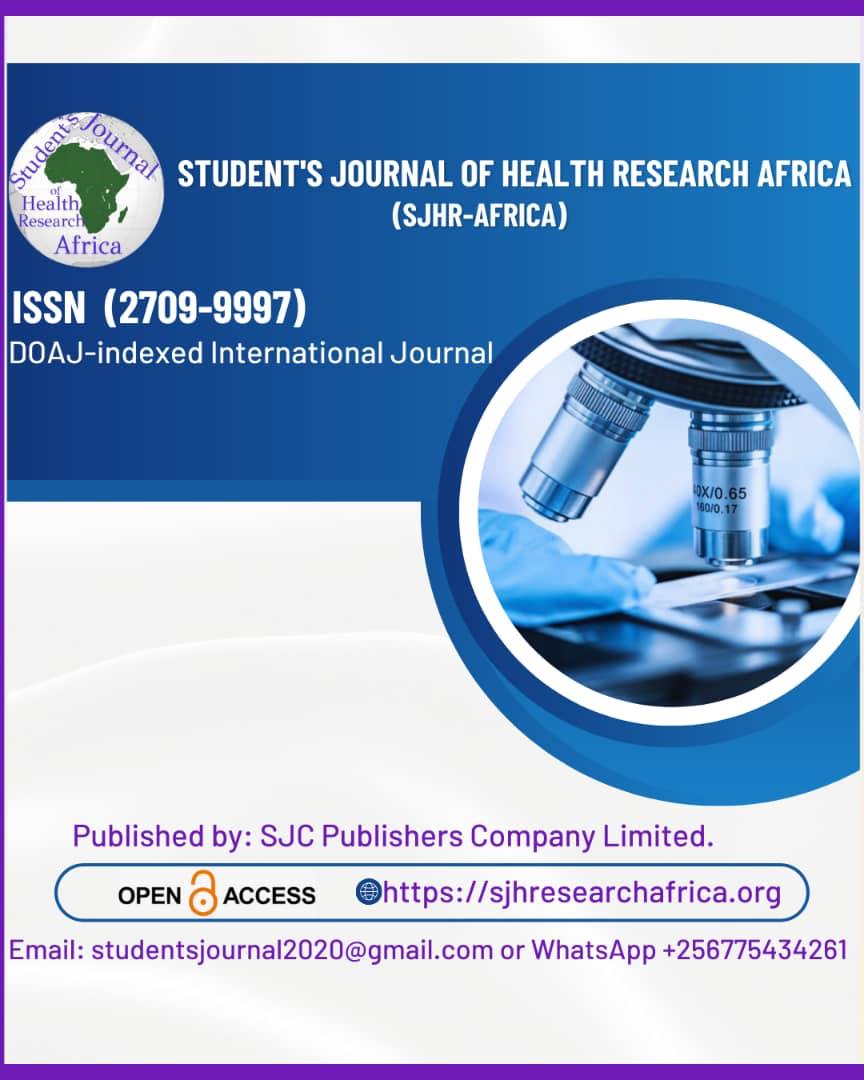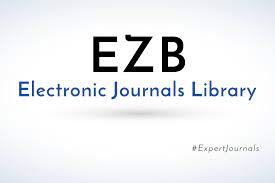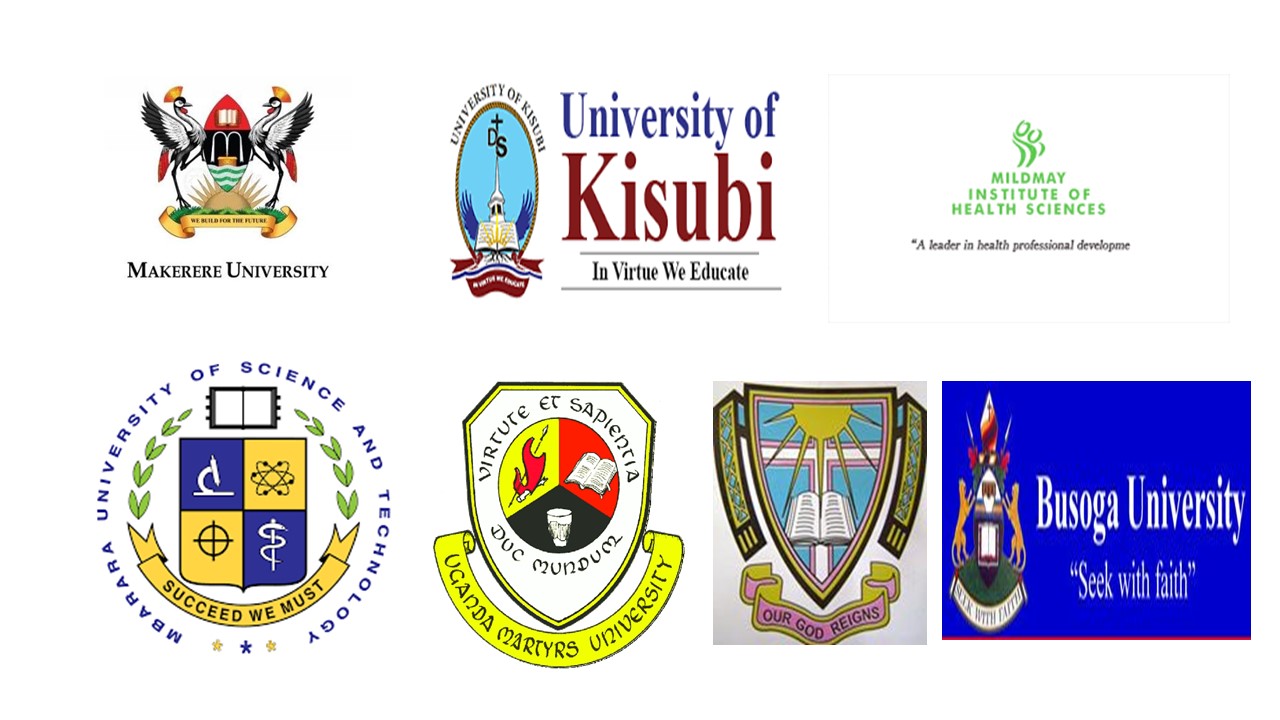Topographic anatomy of the thyroid gland and recurrent laryngeal nerve in cadavers: A descriptive cross-sectional cadaveric study with surgical relevance.
DOI:
https://doi.org/10.51168/sjhrafrica.v6i6.1759Keywords:
Recurrent laryngeal nerve, Thyroid gland, Inferior thyroid artery, Anatomical variations, Cadaveric study, Tracheoesophageal groove, Extra laryngeal branching, ThyroidectomyAbstract
Background:
Injury to the recurrent laryngeal nerve (RLN) is a significant complication of thyroid surgery. Due to its variable anatomical course and relationship with the thyroid gland and inferior thyroid artery, thorough anatomical understanding is essential to minimize surgical risk.
Objective:
To evaluate the anatomical variations of the RLN about the thyroid gland and inferior thyroid artery in adult cadavers, with emphasis on surgical relevance.
Methods:
A descriptive study was performed on 20 formalin-fixed adult cadavers (40 heminecks). Bilateral dissections were conducted to assess the RLN's position (in or outside the tracheoesophageal groove), its relationship with the inferior thyroid artery, extra laryngeal branching, and laryngeal entry level. Observations were recorded and analyzed using descriptive statistics.
Results:
The RLN was located within the tracheoesophageal groove in 85% of heminecks. It lay posterior to the inferior thyroid artery in 57.5%, anterior in 25%, and between its branches in 17.5%. Extra laryngeal branching was observed in 12.5%, more often on the right. In 10% of cases, the nerve entered the larynx at a higher-than-usual level. Asymmetry between the right and left sides occurred in 20% of cadavers. No statistically significant side differences were noted (p > 0.05).
Conclusion:
The recurrent laryngeal nerve exhibits notable anatomical variations that hold significant surgical relevance. Awareness of these variations is critical for preventing nerve injury during thyroidectomy.
Recommendations:
Surgeons should carefully identify the RLN during dissection, avoid blind ligation near the inferior thyroid artery, use intraoperative nerve monitoring, when possible, integrate cadaveric training in surgical education, and consider preoperative imaging for detecting anatomical variations.
References
Wu H, Zhang D, Li H, Zhang M, Jin X. Anatomical relationships of recurrent laryngeal nerve with the thyroid gland and its surgical implications: a meta-analysis. Surg Radiol Anat. 2023;45(3):293–301. https://doi.org/10.1007/s00276-022-03043-5
Song CM, Lee YS, Jung SL, Bae JS, Kim SW. Recurrent laryngeal nerve injury during thyroidectomy: anatomical considerations and surgical strategies to prevent nerve damage. Clin Exp Otorhinolaryngol. 2022;15(1):12–19. https://doi.org/10.21053/ceo.2021.00445
Cai Y, Xie L, Zhu J, Sun X, Han B. Non-recurrent laryngeal nerve: a systematic review and meta-analysis of 27,356 thyroid surgery cases. Langenbecks Arch Surg. 2021;406(3):649–656. https://doi.org/10.1007/s00423-021-02061-9
Chhetri RK, Yadav PK, Joshi RR, Paudel S, Khanal R. Anatomical variations of recurrent laryngeal nerve: findings from a cadaveric study in a tertiary medical college. Nepal Med Coll J. 2021;23(1):10–14. https://doi.org/10.3126/nmcj.v23i1.36664
Cirocchi R, Arezzo A, D'Andrea V, et al. Recurrent laryngeal nerve injury in thyroid surgery: a review of the literature. Gland Surg. 2019;8(Suppl 1):S52–S61. https://doi.org/10.21037/gs.2018.09.10
Barczyński M, Randolph GW, Cernea CR, et al. External branch of the superior laryngeal nerve monitoring during thyroid and parathyroid surgery: international neural monitoring study group standards guideline. Laryngoscope. 2021;131(S1):S1–S17. https://doi.org/10.1002/lary.29229
Henry BM, Sanna S, Graves MJ, et al. The surgical anatomy of the recurrent laryngeal nerve: a meta-analysis and clinical considerations. Laryngoscope. 2017;127(1):E13–E21. https://doi.org/10.1002/lary.26101
Makay O, Icoz G, Yilmaz M, Akyildiz M, Ertan T, Akgun I. The recurrent laryngeal nerve and the inferior thyroid artery—anatomical variations during thyroidectomy. Surg Today. 2005;35(7):518–521. https://doi.org/10.1007/s00595-005-2989-1
Zakaria HM, Al Awad NA, Al Kreedes AS, Al-Mulhim AM, Al-Sharway MA, Hadi MA, Al Sayyah AA. Recurrent laryngeal nerve injury in thyroid surgery. Oman Med J. 2011 Jan;26(1):34-8. doi: 10.5001/omj.2011.09.
Aytac B, Karamercan A. Recurrent laryngeal nerve injury and preservation in thyroidectomy. Saudi Med J. 2005 Nov;26(11):1746-9.
Pandey AK, Varma A, Bansal C, Bhardwaj A. An Exposition on Surgical Experiences in Identification, Exposure, and Injuries of Recurrent Laryngeal Nerve (RLN) During Thyroid Operations: Gleanings, Narrative, and the Reflections. Indian J Otolaryngol Head Neck Surg. 2023 Sep;75(3):1363-1369. doi: 10.1007/s12070-023-03541-7.
Friedrich T, Steinert M, Keitel R, Sattler B, Schönfelder M. The incidence of recurrent laryngeal nerve lesions after thyroid surgery: a retrospective analysis. Zentralbl Chir 1998;123:25-29
Gonçalves Filho J, Kowalski LP. Surgical complications after thyroid surgery performed in a cancer hospital. Otolaryngol Head Neck Surg 2005. Mar;132(3):490-494 10.1016/j.otohns.2004.09.028
Hisham AN, Lukman MR. Recurrent laryngeal nerve in thyroid surgery: a critical appraisal. ANZ J Surg 2002. Dec;72(12):887-889 10.1046/j.1445-2197.2002.02578.x
Donatini G, Carnaille B, Dionigi G. Risks and benefits of intraoperative neuromonitoring in thyroid surgery: a systematic review. Langenbecks Arch Surg. 2020;405(6):863–873. https://doi.org/10.1007/s00423-020-01887-5
Downloads
Published
How to Cite
Issue
Section
License
Copyright (c) 2025 Dr. Ashok Aenumulapalli, Dr. Sravanthi Repalle, Deepika Vazir

This work is licensed under a Creative Commons Attribution-NonCommercial-NoDerivatives 4.0 International License.






















